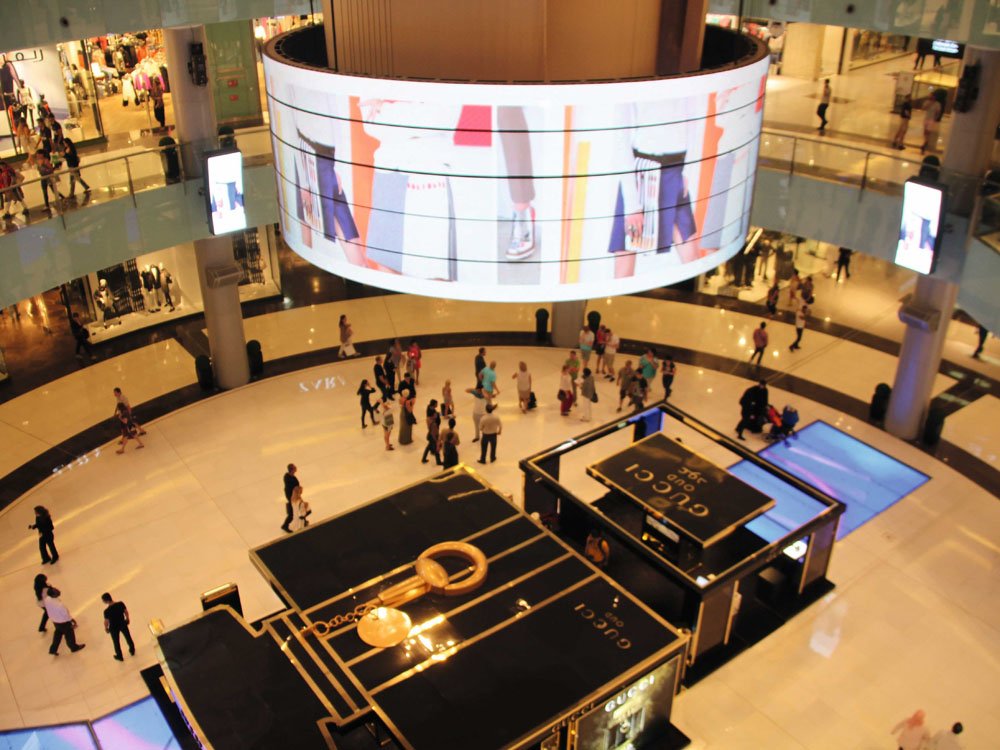Demand for digital signage remains very strong in a very positive non-oil sector economic environment. Even though the overall economic situation in Saudi Arabia and the other GCC countries is suffering due to lower oil prices, the general outlook remains very positive. The service sector in all major markets (AE, KU, QR, SA) is growing faster than any European market. Drivers of investment are major events in the coming years like Expo 2020 in Dubai or the FIFA World Cup 2022 in Qatar. Investment in commercial real estate (office and retail) and transport infrastructure (airports, train, metro) will drive demand for digital signage at an even faster pace. Invidis believes in the upside potential of the region to develop over the next three years to a top five region in EMEA behind Germany, UK, France, and the Nordics.
As well as display vendors, more and more software suppliers are setting up offices in the GCC region. Scala is leading the category by opening a dedicated office in the UAE for the wider region. Other companies continue to rely on local distribution partners or focused eco system partners (systems integrators with a strong market footprint). Dubai and the UAE remains the most important entry door for the region: virtually all components for the GCC region are channelled through the UAE. Also, most agencies are located in Dubai, which is the reason for most players to locate regional resources in Media City and other free trade zones around the largest city of the UAE.
Focusing on “Wow!”
In general, digital signage projects are more focused on a unique “Wow!” effect – larger, brighter, flashy. Typically, scale and ROI issues are not as high on the agenda as in Europe. The reason for this is obviously the small regional markets, with the exception of Saudi Arabia. But even there, only the major metropolitan areas are the focus for most non-oil sector investments. Most projects rely on traditional server architecture; cloud solutions are still not very widespread. LED media walls as media façades are very common. Retail, banking and transport remain the main vertical markets for digital signage solutions, the most prominent being shopping malls and airports.
In the Middle East, digital signage at the point of information (PoI) often complements staff and doesn’t replace personal information as in the more mature markets in Europe. As labour costs are lower than in Europe, digital media doesn’t offer a cheaper alternative. But the demand for multi-language information – especially Hindi and Chinese – is very high in the region. Digital signage and kiosk systems are a great addition to standardised information services, especially at airports, exhibition centres or in shopping malls.
A general driver for digital signage is the need for multi-lingual content. Information and advertising is often displayed in Arabic and English – and in tourist hot spots or exhibition areas, even in Chinese, Hindi and Russian. The main driver for digital marketing, though – including large format displays – is multi-screen communication. Even though seamless user experiences are still an exception, connecting mobile devices and fixed displays in public areas is driving digital in the region. The penetration rate of mobile is one of the highest in the world, e-couponing is widely accepted and the usage rate of social media is very high, with Facebook and Twitter the leading platforms across the Middle East.
Content a challenge
Content remains a challenging task in the region. Creative agencies in the region are getting more and more interested, but the general knowledge and interest is still comparatively low. Most digital signage and DooH screens just show advertising visuals derived from international campaigns or local stills. Adaptation of internationally-led campaigns is important in conservative markets like Saudi Arabia. The use of template-based content beyond in-store (digital menu boards) is still quite low. Even local news, complementing advertising campaigns, is not very popular. Advertising and sales uplift at the point of sale are the main drivers. Shopping malls are usually happy with basic store directories: only a few exceptions, like Dubai Mall, feature smart and category-searchable digital signage listings.
Augmented reality (AR) or virtual reality (VR) campaigns gain a lot of media attention – but are still rare. What’s really hindering more local content are the small markets: real estate campaigns are often limited to a metropolitan area. FMCG, regional media outlets (mostly TV) and travel are a few of the advertising categories which book campaigns in more than one country in the region.
Other markets beyond the GCC are also worth looking at, the most important being Egypt which is back on the digital signage map after years of political instability. Large infrastructure investments are currently being developed. Retail – especially shopping malls – is upgrading existing facilities or developing new sites. Due to the large domestic market, Egypt has the potential to develop again as a top market for digital signage in the coming years. Lebanon remains the only market of the other Middle East countries to stay on the radar, but demand is limited and often managed through the UAE. In regard to out-of-home, Beirut remains one of the main drivers in the region.

